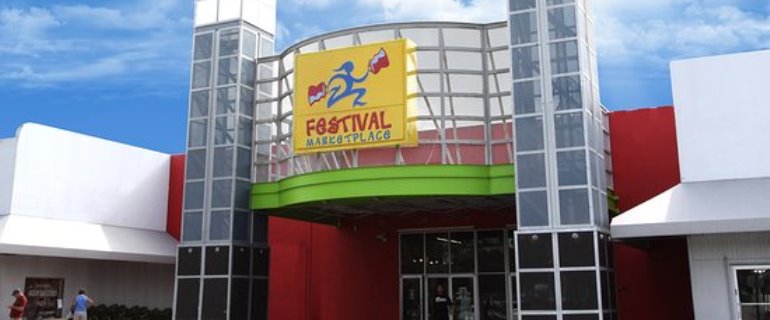A developer and warehouse operator won approval from the Pompano Beach City Commission to replace the Festival Flea Market Mall with about 470,000 square feet of warehouse space.
North Miami-based IMC Equity, led by owner and CEO Yorham Izhak, is working with Atlanta-based IDI Logistics to demolish the Festival Flea Market Mall on the southeast corner of the Florida Turnpike and Sample Road, and redevelop the site as a warehouse complex with a 412,347-square-foot building and a 58,962-square-foot building.
The Pompano Beach City Commission just voted to rezone from “general business” (B-3) to “general industrial” (I-1) a 23.8-acre portion of the 37-acre Festival Flea Market site. The rest of the site, which is at the corner of Sample Road and Northwest 27 Avenue, remains a commercial outparcel for a proposed Racetrac Gas Station and Market.
The city commission also approved a text amendment and a map amendment to the local land use plan for the Festival Flea Market property. IDI Logistics filed the application for the land-use amendments, and a company controlled by IMC Equity applied for the rezoning.
In 2018, IMC Equity paid $25 million to acquire the Festival Flea Market Mall at 2900 West Sample Road and another $31 million for the mall business itself. The flea market rents space to tenants that sell apparel, shoes, bags, luggage, jewelry, and electronics, among other types of goods.
“It will be at least a year before the tenants would have to leave,” Dennis Mele, an attorney for IMC Equity, said at a June 14 meeting of city commissioners, who voted then to table their consideration of the warehouse project.
Mele said the Festival Flea Market project will be the fourth warehouse development that IDI Logistics has pursued in Pompano Beach. The Atlanta-based company owns and operates the Pompano M Business Center, the Pompano II Business Center, and the Rock Lake Business Center, which is just south of the Festival Flea Market Mall.
Commissioner Beverly Perkins said after the Festival Flea Market Mall is demolished, the city should assist tenants of the mall, including some who have leased space there for more than 20 years.
The trend toward online shopping, which the pandemic strengthened, is driving the industrial redevelopment of the Festival Flea Market Mall, according to the rezoning application filed by IMC Equity. The location of the mall also allows fast access to the Turnpike, I-95 and the Sawgrass Expressway.
“The impacts of COVID-19 will likely impact the way people shop well into the future, which will continue to reduce the need for brick-and-mortar stores as people continue to do much of their shopping online,” according to the rezoning application.
Industrial vacancy in Broward County plunged to 4.7 percent in the first quarter from 8.7 percent during the same period of last year, as tenants absorbed new warehouses and other types of industrial property, according to a report by Avison Young. The vacancy rate in the first quarter was 4.1 percent in Pompano Beach, which has 29.6 million square feet of industrial space, the largest inventory among seven sub-markets in Broward County, Avison Young reported. Industrial space under construction in the first quarter totaled 285,176 square feet in Pompano Beach, nearly 600,000 square feet in southeast Broward, and 1.6 million square feet county-wide, according to Avison Young.
Broward County had a 4.2 percent industrial vacancy rate in the first quarter, compared with 2.6 percent in Miami-Dade County and 4.5 percent in Palm Beach County, according to industrial market research by JLL.
Source: The Real Deal






